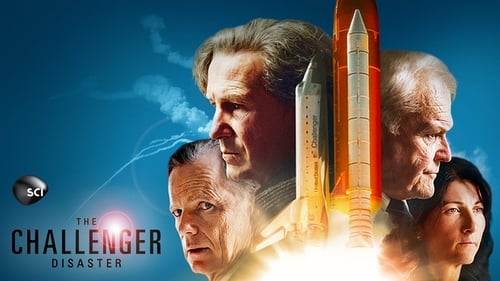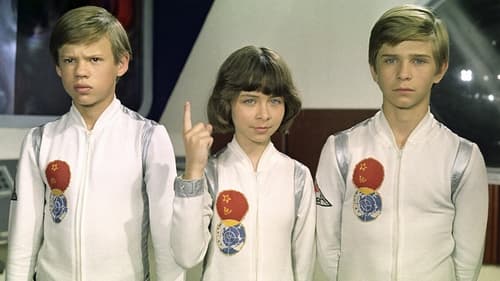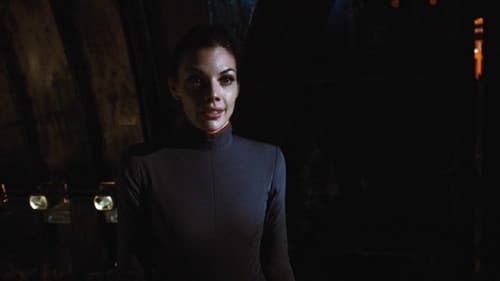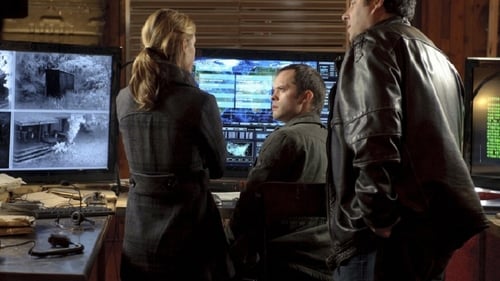Chernobyl: The Lost Tapes (2022)
Unseen footage. Untold tragedy.
Género : Documental
Tiempo de ejecución : 1H 31M
Director : James Jones
Sinopsis
The story of Chernobyl told through a newly discovered hoard of dramatic footage filmed at the nuclear plant during the disaster and deeply personal interviews of those who were there, directed by Emmy Award-winner and Russian-speaker James Jones.

Lech Kowalski articula East of paradise como un doble confesión. Una mujer de ochenta años, Maria Werla cuenta frente a la cámara su experiencia en el Gulag soviético. Maria era hija de una familia polaca que estuvo obligada a abandonar su país natal durante la guerra. Después de un largo viaje se encontró en Siberia, donde aprendió a sobrevivir y tuvo que afrontar un doloroso camino para reencontrar su propia libertad. La memoria oral fluye de forma prodigiosa, como si el deseo de testimoniar la llevara a construir un relato donde resucita personajes que se cruzaron en su existencia y revive momentos de angustia insoportable que destruyeron su propia juventud. Su palabra evoca la tristeza y provoca un sentimiento de impotencia ante los rumbos de una historia oculta –las purgas estalinistas- que selló numerosas vidas. Tal como reconoce, Maria Werla su juventud estuvo en manos del poder.

La pelicula es una especie de documental dramático en el cual un físico investiga por qué ocurrió el desastre del Challenger, un transbordador espacial de la NASA que explotó delante de la vista de millones de personas. En esta explosión murió toda la tripulación, que estaba compuesta por siete personas. Así, en la película, un físico nos va explicando cuáles fueron las causas de este desastre, del cual la NASA aprendió mucho para el futuro. En este film, hecho para la televisión, vamos a ver cómo el accidente se produjo por una junta tórica, que es una insignificante arandela de goma, que debido al frío se cuarteó y no hizo bien su trabajo, lo que provocó una fuga de gas. De esta manera, el depósito del combustible se vio afectado y el transbordador espacial explotó, lo cual creó un trauma tanto en la NASA como en el pueblo estadounidense, que tardó un tiempo en recuperarse, algo que veremos en la película.

Un análisis retrospectivo de las causas y de las consecuencias del catastrófico accidente acaecido en la central nuclear de Chernóbil, Ucrania, el 26 de abril de 1986.

Blowing Up Paradise utiliza imágenes de archivo en color para narrar la explosión de varios dispositivos nucleares en Francia, en violación del tratado internacional de prohibición de pruebas, desde la primera prueba en 1966 hasta la última en 1995. Entrevistas con antiguos y actuales funcionarios del gobierno francés, científicos y asesores.

Footage shot not long after the 1906 earthquake in San Francisco is edited together so that more than one scene and more than one vantage are included. We see fire raging. We see burned-out buildings, piles of rubble, and buildings with only one wall standing. People stand and watch; others walk purposely through the debris. A carriage passes; the camera pans the desolation. A horse-drawn cart is laden with a family's remaining possessions. A sign hangs outside one building: "A little disfigured but still in business. Men Wanted."

The story of Stuart Diver, the only person to survive the 1997 Thredbo tragedy that came about when a landslide engulfed a ski lodge situated in Australia's Snowy Mountains.

From the same studio that produced Richard Viktorov's diptych Moscow-Cassiopeia / Adolescents in the Universe comes this second teen-themed sci-fi adventure, in which three youngsters have to take command of a space flight when their adult captain comes down sick and is forced to quarantine himself.

En un futuro cercano, cuando los sistemas de comunicación se desconectan en una central nuclear aislada en el desierto, un joven inspector de seguridad, Abby Dixon, se ve obligada a ir hasta allí para restablecer las comunicaciones. Una vez en las instalaciones de la central, se da cuenta de que allí sucede algo misterioso.

Gary es joven, ágil y aprende con facilidad. Es de esas personas a las que nunca se les ha prometido algo. Después de una sucesión de pequeños trabajaos, es contratado en una central nuclear. Ahí, cerca de los reactores, donde las dosis radioactivas son más fuertes, encuentra por fin lo que buscaba, dinero, un equipo, una familia. Pero en el equipo, también está Karole, la mujer de Toni de quien se enamora. El amor prohibido y las radiaciones contaminan lentamente a Gary. Cada día es una amenaza.

Después de un deslizamiento de tierra en el Axenstrasse la geóloga Mara Graf y su novio, el sismólogo Gian Wyss, investigan con el Servicio Sismológico de la Universidad de Tecnología de Suiza. Para Gian esta es una buena oportunidad para pasar unas semanas de primavera en casa y Mara estar con su abuela y su hermana. Al día siguiente, Gian y Mara quieren anclar indicadores en la parte inferior del lago de Lucerna, en una inmersión. Deciden bucear solos. Antes de que Mara le pueda seguir, una explosión sacudió su barco.

Terremotos masivos sacuden violentamente ciudades y misteriosas esferas de plasma golpean la superficie terrestre. Los gritos de "apocalipsís" hacen eco en todo el mundo, y la gente vive atemorizada. Un grupo de personas decide equiparse con lo necesario para intentar sobrevivir al desastre.

The cockpit of a Boeing 747 is struck by lightning during takeoff for a flight to Europe, fatally injuring the flight crew. Laurie, the senior flight attendant, enlists the aid of passenger Brett Young. They determine that the autopilot can bring the plane in for a landing, but soon learn that the autopilot is locking onto the transponders of airfields at random, including signals from small airports with runways too short to accommodate the jumbo jet. Meanwhile, federal officials on the ground who have lost radio contact with the jet debate whether the plane should be shot down to prevent a more disastrous crash in a heavily populated area.

A film directed by the pioneer of cinema in Azerbaijan, Alexandre Michon, it was filmed on August 4, 1898 in Balakhany, Baku and presented at the International Paris Exhibition. The film was shot using a 35mm film on a Lumière cinematograph. Silent movie. (Wikipedia)

This shows the heart of one of the tremendous drifts in the east end of Galveston. Hundreds of dead bodies are concealed in these immense masses, and at the time the picture was taken the odor given out could be detected for miles. The subject shows a gang of laborers clearing away the debris in the search for corpses, one of which was discovered while the picture was being taken. (Edison film catalog)

The airship Hindenburg, arriving from Europe, was being led to its mooring at Lakehurst, New Jersey when suddenly disaster struck. The hydrogen-filled zeppelin ignited, and was almost instantly transformed into an enormous fireball. In less than a minute, the entire ship had been consumed by flames. The Hindenburg explosion marked the end of the budding airship travel industry.

While Tropical Storm Allison brings one of the worst floods to hit Houston rages outside, the staff of Hermann hospital races against time to ensure hundreds of patients are evacuated safely.

Apocalyptic 1980 ECO MONDO narrated by the master of creepy camp VINCENT PRICE featuring some spectacular (disaster) and occasionally graphic footage.

German apparently disavowed this, his first film, because of his co-director Grigori Aranov's more classical approach (and his kowtowing to Soviet authority); too bad, because it's something of a knockout. A brilliant, gripping portrait of the era of "Red Terror" during the civil war that followed the Bolshevik revolution, The Seventh Companion offers a superlative character study in General Adamov (Andrei Popov), a law professor in the tsarist army, who is incarcerated by the Bolshevik secret police along with many other members of the bourgeoisie. Finally released into the new world of the Soviet Union, the resigned officer finds that he has lost everything from his old life except a mantel clock that he carries through the night from place to place, until he ends up, like Rossellini's inmate seeking readmission to prison in Dovè la liberta?, back where he started.

This documentary promoting the joys of life in a Soviet village centers around the activities of the Young Pioneers. These children are constantly busy, pasting propaganda posters on walls, distributing hand bills, exhorting all to "buy from the cooperative" as opposed to the Public Sector, promoting temperance, and helping poor widows. Experimental portions of the film, projected in reverse, feature the un-slaughtering of a bull and the un-baking of bread.














